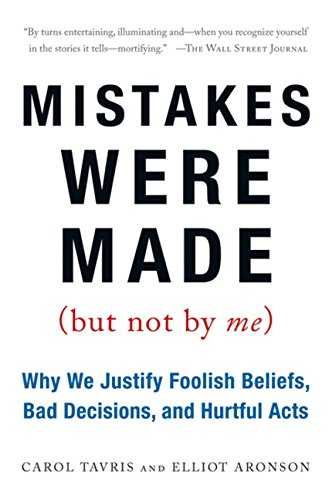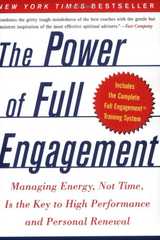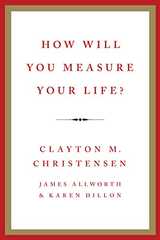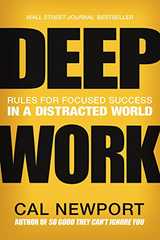
One Small Step Can Change Your Life: The Kaizen Way
byRobert Maurer
Kaizen is a Japanese word that refers to "achieving great and lasting success through small, steady steps".
Robert Maurer attempts to teach the mindset of success through the art of the kaizen way. A large portion of the population is resistant to big changes and after a while when it seems like big changes are needed to improve the conditions of their lives, big actions can lead towards big failures. Maurer, says the better approach is to take very small steps towards our goals. With this approach we lessen out resistance towards change and can bring on long-longer lasting and significant results over time.
The methods the book provides to act small and still get significant results in your life are: Ask small Questions, Think Small Thoughts, Take Small Actions, Solve Small Problems.
Motivations to Read
Small incremental steps is a key part of productivity and I wanted to learn about how others approach it.
3 Reasons to Read
- You're too busy to make big changes in your life and still need a way to make them happen.
- Improve your focus and detailed thinking
- Improve your ability to break down goals into small steps
Notable Quotes
“Strive not to be a success, but rather to be of value.” — Albert Einstein
“Small things with great love. . . . It is not how much we do, but how much love we put into the doing. And it is not how much we give, but how much love we put into the giving. To God there is nothing small.” Robert Maurer
“Low key change helps the human mind circumnavigate the fear that blocks success and creativity.” Robert Maurer
“Once you've experienced the joy of taking the first step, you can decide whether it's appropriate to take another. You'll know you're ready when your current step becomes automatic, effortless, and even pleasurable. But don't let anyone pressure you... If you ever feel yourself dreading the activity or making excuses for not performing it, it's time to cut back on the size of the step.” Robert Maurer
“When you improve a little each day, eventually big things occur. When you improve conditioning a little each day, eventually you have a big improvement in conditioning. Not tomorrow, not the next day, but eventually a big gain is made. Don't look for the big, quick improvement. Seek the small improvement one day at a time. That's the only way it happens—and when it happens, it lasts.” —John Wooden, one of the most successful coaches in the history of college basketball” Robert Maurer
One Small Step Can Change Your Life: The Kaizen Way Notes & Summary
The author wants to understand the traits of success.
Two key questions were on his mind throughout his professional life:
- How do people succeed?
- How do successful people stay successful?
The radical changes of innovation are appealing to many on the path to success or personal growth. Some use it as a shortcut, but the results are inconsistent.
There are many paths to success, but the author found a common theme: small changes, made over time.
Kaizen
Kaizen is a Japanese phrase which has an essence captured in this powerful saying:
"A journey of a thousand miles must begin with the first step." - Lao Tzu
Kaizen Techniques
- Ask Small Questions
- Think Small Thoughts
- Take Small Actions
- Solve Small Problems
- Bestow Small Rewards
- Identify Small Moments
Ask Small Questions
"Small questions create a mental environment that welcomes unabashed creativity and playfulness. When you ask small questions of others, you can channel that creative forces toward team goals. By asking small questions of yourself, you lay the groundwork for a personalized kaizen program for change."
"What shapes our lives are the questions we ask, refuse to ask, or never think to ask." - Sam Keen
Practicing Small Questions
- If you are unhappy but aren't sure why, try asking yourself this: If I were guaranteed not to fail, what would I be doing differently?
- If you are trying to reach a specific goal, ask yourself every day: What is one small step I could take toward reaching my goal?
- If you are generally content with your life but would like to remain alert to possibilities for excellence, you can ask yourself a slightly different version: What is one small step I could take to improve my health (or relationships, or career, or any other area)?
- Often we focus our attention on other people we think are most "important" - a key employee, the problem child, or our mate, leading us to ignore others who may have valuable insights for us. Try asking yourself this: Is there a person at work or in my personal life whose voice and input I haven't heard in a long time? What small question could I ask this person?
- This question is for anyone who has a festering conflict with another person: What's one good thing about this person?
- If you tend to feel pessimistic or negative, try asking yourself this question: What is one small thing that is special about me (or my spouse, or my organization)?
Think Small Thoughts
"The easy technique of mind sculpture uses 'small thoughts' to help you develop new social, mental, and even physical skills - just by imagining yourself performing them."
Mind Sculpture is a good way to prepare your brain for an activity and reduce the risk of being surprised by fear or uncertainty.
A Mind Sculpture How-TO
- Give yourself some buffer time before you have to do a task that you are afraid to do or that makes you uncomfortable and focus on it.
- Give yourself a daily time commitment, ideally in seconds that you'll devote to mind sculpture for this task each day. The time commitment is low so it's hard to miss it.
- When you are ready to practice find a comfortable and or quiet location and close your eyes.
- Imagine the task or situation you set out to focus on. What do you see? What is the setting? Who's there? What do they look like? Try to be as detailed in your mind as you can.
- Expand your imagination tot he rest of your senses. What are the sounds and smalls and flavors and textures around you?
- Without moving an actual muscle, imagine that you are performing the task. What are your physical gestures? (In your mind)
- Imagine a positive response to your activity. What do the results look and feel like?
- When you have gotten used to your mind sculpture exercise, you may choose to increase the time your spend on it. It you start to miss session, cut back time.
- Once your feel comfortable using a mind sculpture for this task, imagine a worst-case scenario and how would you respond effectively to it?
- When you feel ready to take on the actual task, try out some small steps at first.
Take Small Actions
"Small actions are at the heart of kaizen. By taking steps so tiny that they seem trivial or even laughable, you'll sail calmly past obstacles that have defeated you before. Slowly - but painlessly! - you'll cultivate an appetite for continued success and lay down a permanent new route to change."
"When people are trying to quit an unhealthful addiction, one of their biggest challenges is the likelihood that a brief period of success will be followed by a long relapse into the bad habit."
Making smaller changes gives your body and mind enough time to adapt and makes the chances of a relapse less likely.
Our mind can grasp smaller, more concrete steps.
Solve Small Problems
"We are so accustomed to living with minor annoyances that it's not always easy to identify them, let alone make corrections. But these annoyances have a way of acquiring mass and eventually blocking your path to change. By training yourself to spot and solve small problems, you can avoid undergoing much more painful remedies later."
Learning to Spot Small Problems
Hindsight is 20/20 is easier to see the issues after problems occur. How can we spot the problems earlier?
- Recall a major mistake you've made at some point in your life? If you remembered small signs, what measures did you have to take to correct the problem? Did you halt your "assembly line" and start all over? Did you ignore the problem in the hopes you'd achieve your result on time anyway?
- Identify one small mistake you have made today, without becoming angry with yourself for making this mistake. This single act, especially if you perform it daily, will raise your awareness of small mistakes.
- Now ask yourself whether the small mistake you identified in exercise 2 reflects a larger problem. or if it has potential to gather velocity. If you feel this mistake indicates a more significant problem in your life, ask yourself: What kaizen step can I take to correct this situation?
- Ask yourself whether there are ways in which you irritate your your family, friends, co-workers, or customers.
"Confront the difficult while it is still easy; accomplish the great task by a series of small acts." - Tao Te Ching
Bestow Small Rewards
"Whether you wish to train yourself or others to instill better habits, small rewards are the perfect encouragement. Not only are they inexpensive and convenient, but they also stimulate the internal motivation required for lasting change."
Big Rewards in businesses for example encourage people to focus on the big and grand ideas that are perceived to produce large rewards. Smaller rewards allow for smaller, yet collectively impactful ideas to arise.
In Japan, the value of the average reward is $3.88 as opposed to the American Average of $458.00. A simple reward of a fountain pen, which still brought in over 1.5 million suggestions a year at Toyota.
Small Rewards encourage Internal Motivation as opposed to External Ones.
The Perfect Reward
- The reward should be appropriate to the goal.
- The reward should be appropriate to the person.
- The reward should be free of inexpensive.
Identify Small Moments
"The kaizen approach to life requires a slower pace and an appreciation of small moments. This pleasant technique can lead to creative breakthroughs and strengthened relationships, and give you a daily boost toward excellence."
Cultivating Awareness of Small Moments
"It takes curiosity and an open mind to see the promise of small moments."
Some Ways to cultivate an open mind:
- Look for a person who has the opposite opinion from you on a hot button-button social policy issue.
- Engage this person in a conversion in which all you do is ask questions with only one agenda: to discover and understand the reasons for his or her point of view.
- Try not to argue, persuade, or sound judgmental.
- You will know you are succeeding when you feel the person becoming more and more relaxed and chatty as they perceive your interest and respect.
"When you improve a little each day, eventually big things occur. When you improve conditioning a little each day, eventually you have a big improvement in conditioning. Not tomorrow, not the next day, but eventually a big gain is made. Don't look for the big, quick improvement. Seek the small improvement one day at a time. That's the only way it happens - and when it happens, it lasts." - John Wooden, one of the most successful coaches in the history of college basketball
Kaizen Origins
The U.S Government during World War II created management courses called Training Within Industries (TWI); they got into the war late and learned how to overtime time and personal constraints. Instead of encouraging radical, more innovative change to produce demanded results, TWI encouraged working towards "continuous improvement." Look for the hundreds of small things you can improve.
The core of Kaizen, small steps towards improvement was introduced to Japan after the war. After the war the Japanese economy was in ruins, there businesses were poorly run, with slack management practices and low morale. The U.S took an interest in helping Japan, even though they were previously enemies, due to the threat of an unstable North Korea, with potential nuclear capabilities.
The Japanese business leaders listened to the U.S Representatives, which included General Douglas MacArthur, having realized that they were defeated by America's superior military equipment and technology, so they became students to American's lessons on manufacturing.
Ironically, these management practices were not as easily accepted back in the U.S and Japan would eventually go on to become a manufacturing powerhouse.
Having their country in ruins and having to build back up, gave them the opportunity to have a solid foundation based on strong principles of the importance of quality control, efficiency and small steps. Small steps became so important to the culture, it became a part of the language and the Japanese named it: kaizen.
Zaizen versus Innovation
"Kaizen and innovation are the two major strategies people use to create change. Where innovation demands shocking and radical reform, all kaizen asks is that you take small, comfortable steps toward improvement."
Kaizen principles would eventually make it's way back to the U.S in the 1980s, mainly in highly technical business applications.
"All changes, even positive ones, are scary. Attempts to reach goals through radical or revolutionary means often fail because they heighten fear. But the small steps of kaizen disarm the brain's fear response, stimulating rational thought and creative play."
Three Part Brain
The fear of change is built into our physiology. We have 3 separate parts of the brain which evolved in intervals of about one or two hundred million years.
- At the bottom of the brain is the brain stem, it's about five hundred million years old and is called the reptilian brain. "The reptilian brain wakes you up in the morning, sends you off to sleep at night, and reminds your heart to beat."
- Sitting at the top of the brain stem is the midbrain, also known as the mammalian brain. It's about three hundred million years old. "The midbrain regulates the body's internal temperature, houses our emotions,and governs the fight-or-flight response that keeps us alive in the face of danger."
- "The third part of the brain is the cortex, which began to develop about one hundred million years ago. [..] It's where our rational thoughts and creative impulses take place."
"One of our challenges as humans is to develop harmony among these different brains so as to avoid physical and emotional illness."
Located in the mid-brain is the amygdala (a-MIG-duh-luh), which has responsibilities over our fight of flight response. While this is critical to our survival, and has helped for hundreds of thousands of years in dangerous environments, in modern times it still sets off alarm bells whenever we want to make a departure from our usual, safe routines.
This is why small changes are important, they go under the radar that triggers fear.
large goal -> fear -> access to cortex restricted -> failure
small goal -> fear bypassed -> cortex engaged -> success
Some people are able to turn fear into excitement, for most people, this doesn't seem to apply.
How Small Steps Become Giant Leaps
"Your brain is programmed to resist change. By taking small steps, you effectively rewire your nervous system so that it does the following:"
- "unsticks" you from a creative block
- bypasses the fight-or-flight response
- creates new connections between neurons that that the brain enthusiastically takes over the process of change and you progress rapidly toward your goal.
Stress... or Fear?
While Maurer was working at the UCLA School of Medicine, observing training, he noticed: "when adults came to see a physician and talk about their emotional pain, they choose words such as stress, anxiety, depression, nervous, and tense. But when I observed children talking about their feelings they talked about being scared, sad, or afraid.
Some of Maurer's conclusions were that children were more accepting that they lived in a world they cannot control, whereas the adults were more likely to think they could control events that were out of their control. The disappointment from their expectations and reality brought out emotions they couldn't control or understand. Adults were also more likely to take desperate measures to get rid of fear.
If you expect fear, you can approach it from a compassionate manner, by realizing that it is alerting you to a challenge, something you may not have full control of, but what you do have control of is your attitude and how you respond to it.
Big or deep questions can also trigger fear in some individuals, so remember the Kaizen method of asking small questions.
Mind Sculpture
"Mind sculpture, developed by Ian Robertson, is a newer technique that involves total but still-imaginary sensory immersion. It requires it's practitioners to pretend that they are actually engaged in the action, not just seeing but hearing, tasting, smelling, and touching. In mind sculpture, people imagine the movement of their muscles, and the rise and fall of their emotions."
In the book Mind Sculpture, Ian Roberston theorized that the brain doesn't actually understand that it's not really performing the imagined activity.
Self-Reliance's Double Nature
"Self-reliance is a frequently used but very poor strategy for coping with life's adversity. That's because we are biologically 'wired' to reach out for support when we're stressed; it's in our nature. Consider what a child does when awakened at night by a nightmare or thunderstorm. The child instinctively runs to a parent's bed for help. The child clings to Mom or Dad and then, after a few moments of soothing, falls asleep in the parent's arms. When this natural coping process is interrupted by parents who are physically or emotionally unavailable, it's replaced by self-reliance and stoicism. As this independent child grows into adulthood, cigarettes or food or other substances become dependable companions, providing comfort consistently and reliably - but with the unfortunate side effects of disease, obesity, or worse."
Three Circumstances in which all of us are especially likely to miss life's small problems.
- Blind Spot Number One: At the Beginning of Your Path to Change Small Problems you think are too irrelevant to take care of at the start.
- Blind Spot Number Two: Near the Finish Line
Failure to listen and think through issues along the round until it's too late and the effort for change gets too high at the end.
- Blind Spot Number Three: An Overwhelming Crisis
"Sometimes it's hard to sport small problems because, paradoxically, the damage they inflict can be so great that we assume the source of such horror must lie in deeply complicated troubles."
"All great things have small beginnings." - Peter Senge, Business Consultant and Author of The Firth Discipline
"When I face the desolate impossibility of writing 500 pages, a sick sense of failure falls on me, and I know I can never do it. then gradually, I write one page and then another. One day;'s work is all that I can permit myself to contemplate." - John Steinbeck
"Success is how you collect your minutes. You spend millions of minutes to reach one triumph, one moment, then spend maybe a thousand minutes enjoying it. If you were unhappy through those millions of minutes, what good is the thousand minutes of triumph? It doesn't equate... Life is made of small pleasures. Good eye contact over the breakfast table with your wife. A moment of touching a friend. Happiness is made of those tiny success. The big ones come too infrequently. If you don't have all of those zillions of tiny successes, the big ones don't mean anything." - Norman Lear
"Confront the difficult when it is still easy; Accomplish the great task by a series of small acts." - Tai Te Ching




